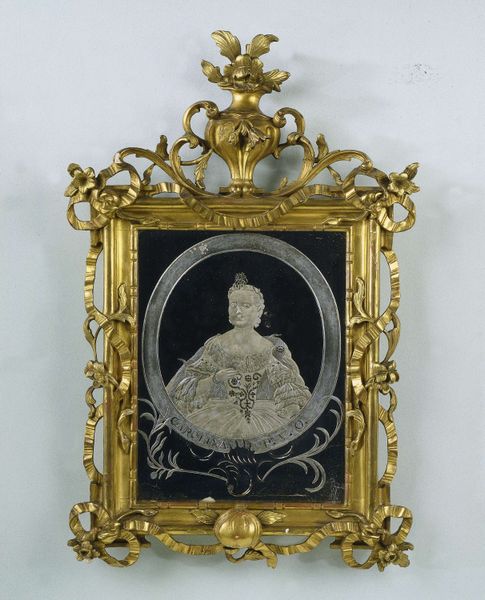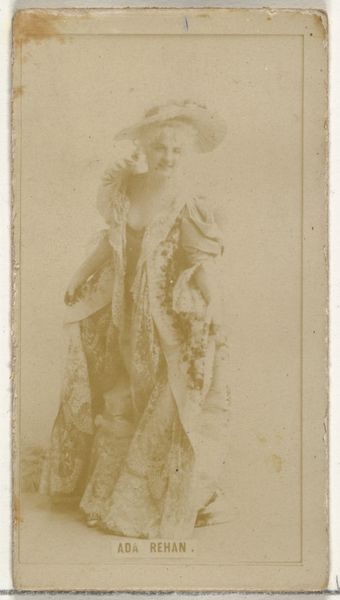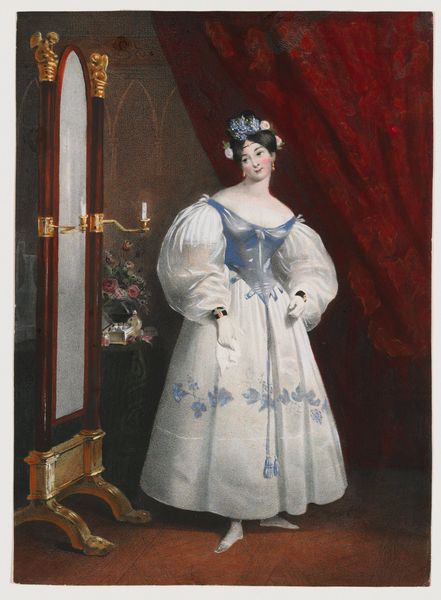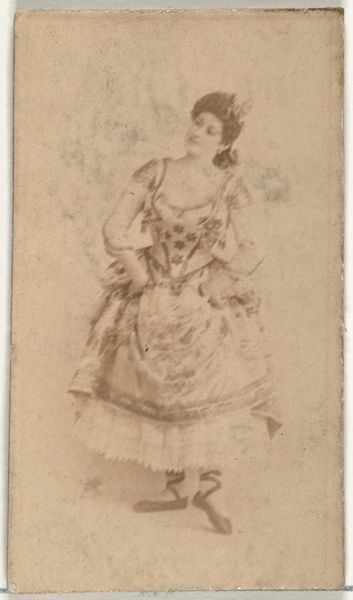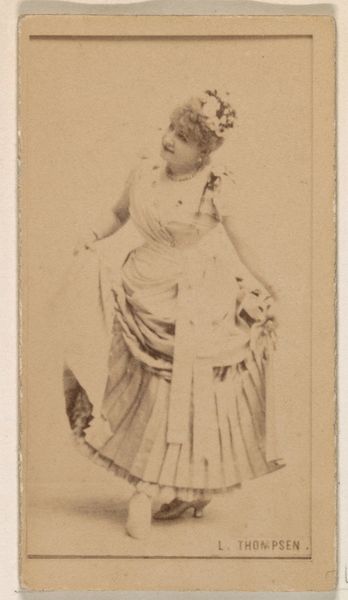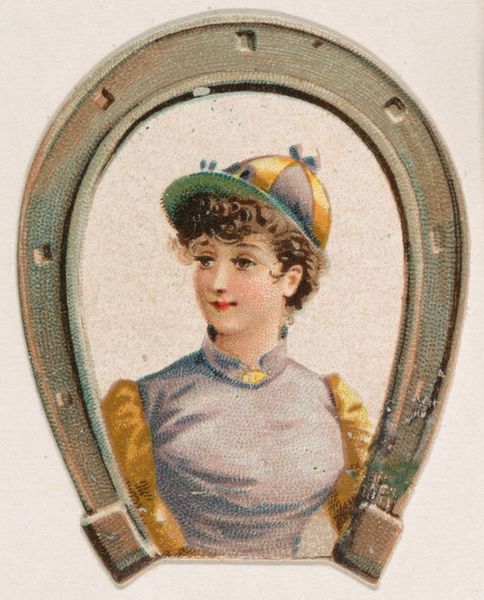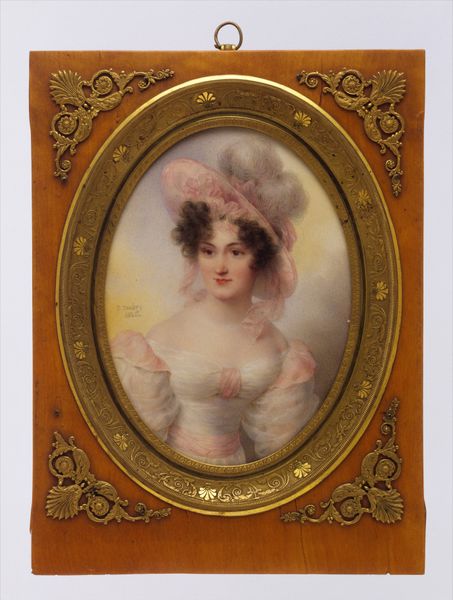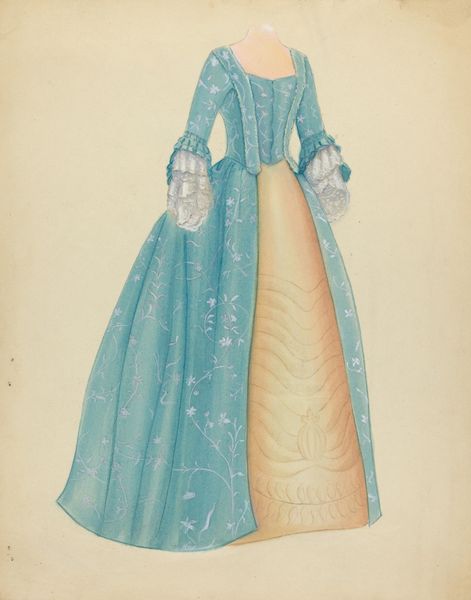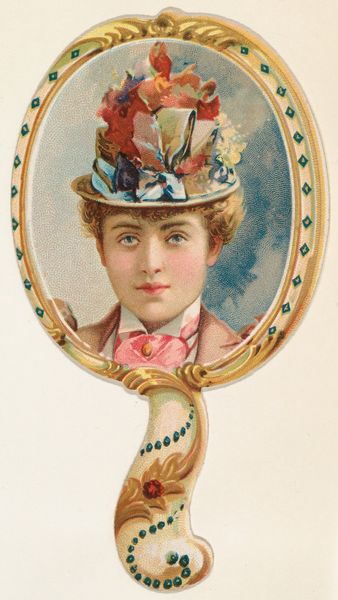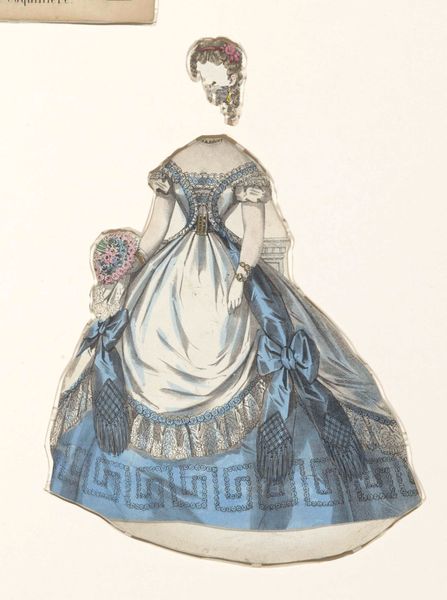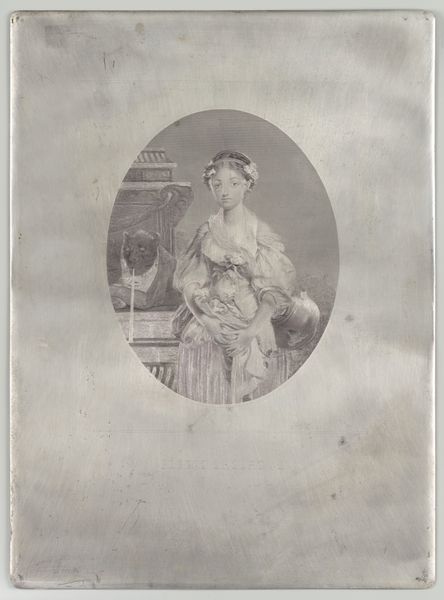
painting, watercolor
#
portrait
#
painting
#
figuration
#
watercolor
#
romanticism
#
genre-painting
#
watercolor
Copyright: Public domain
Curator: Standing before us is "The dancer, decoration for a stage of the V order of the Teatro alla Scala" by Gerolamo Induno. Editor: My initial impression is one of lightness and fragility, a feeling enhanced by the delicate watercolor medium. The composition is gracefully asymmetrical, drawing the eye upward. Curator: Induno, though not widely known today, captured glimpses into the social fabric of 19th-century Italy, especially around performance. This dancer is a figure of both artistry and the societal gaze—her profession situating her within complex power dynamics. Editor: Absolutely, the very posture exudes performativity. The artist masterfully uses light and shadow to sculpt the form and add movement, especially evident in the swirling fabric of her gown. I wonder, too, about the semiotic weight of the fan—both an accessory and a potential tool of communication. Curator: Indeed. These women occupied a space often relegated to the margins, yet their performances were central to elite social rituals. Consider the male gaze that not only frames their artistic presentation, but also potentially dictates their livelihoods and social standing. Editor: Focusing solely on the artistic choices, there's a deliberate use of color to highlight the dancer against the plain backdrop. Note how her ornate costume contrasts against a soft wash of yellow—the visual balance is just right, avoiding excess that might overpower. The romantic aesthetic enhances this balance further. Curator: Considering the socio-economic dimensions brings forth pertinent inquiries about gendered labour, class divisions and visibility that women, particularly those associated with theatres, navigated during this epoch. It speaks to larger issues surrounding respectability. Editor: Precisely—it underscores the artist's intention to capture not only likeness, but an ephemeral quality and social setting through color and visual arrangements. Curator: This work serves as a gateway into an expansive dialogue about art, labor and identity and perhaps challenges how history often silences the voices from outside the halls of power. Editor: And, through careful arrangement and an excellent attention to detail, this study evokes an appreciation for its grace while still considering questions about art as commerce.
Comments
No comments
Be the first to comment and join the conversation on the ultimate creative platform.

